Leonardo’s Women – A Lecture by Shirley Smith
Shirley began her fascinating lecture by reminding us that this year is the 500th anniversary of Leonardo’s death.
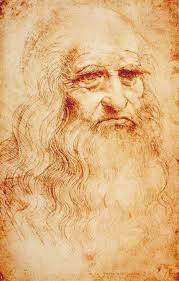
He was born on April 15th 1452 in Vinci. Soon after his birth, his family moved to Florence, where the power was in the hands of Medici – a big supporter and promoter of Art. By the time he was 14 he was working in the workshop of Andrea de Verachio. At this time he lived in a house with several other young men and this led to suggestions that he was homosexual, though most of his portraits were of women.
Shirley then began to introduce us to Leonardo’s women.One of his earliest portraits was his portrait of Ginevre da Banci.
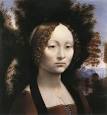
This painting shows how Leonardo was always wanting to create new approaches and in this portrait he has turned her to face the viewer, whereas up to now portraits were always in profile. On the back of this portrait he wrote ‘ She adorned her virtue with beauty.’ Another new approach was to use oil, rather than tempura, which dries slowly and therefore allows the artist to build up layer upon layer .
Leonardo made the surprising decision to move to Milan which was not a city renowned for its art. Ludovico Sforza who was Duke of Milan at the time was a warlord and Leonardo’s letter to Sforza contained drawings of military vehicles, which clearly would have pleased him.
In 1489 Leonardo painted one of his most famous portraits – ‘Lady with Ermine’.
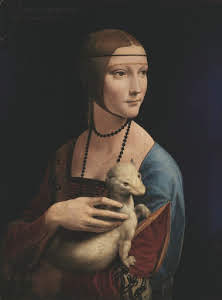
The lady was Cecelia Gallerani – the mistress of Sforza. Her hairstyle with the knot was very Milanese in style. It is also interesting to see the position he painted her in – with her head facing one way and her body facing the other. This gives a sense of vitality to the portrait. Though at this time Leonardo was still not painting the portraits with the ladies facing forward. It was an interesting choice to paint the lady with an ermine as they were renowned for their cleanliness. The fact that he painted the hands of the ladies was also quite a new idea.. On her face there is just a hint of a smile.
‘La Belle Perroniere ‘ (1490) was another portrait in which the subjects head faced one way whilst the body faced another..
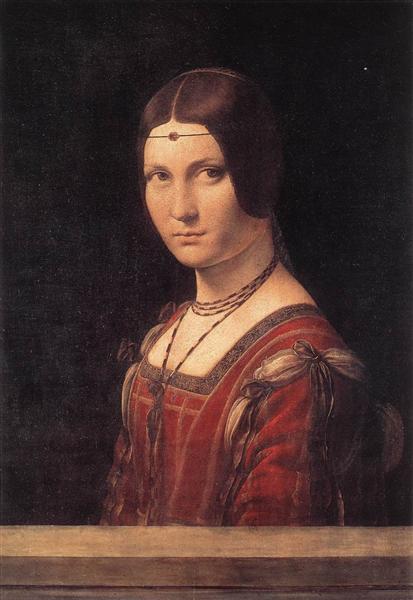
Though Leonardo is now painting the lady looking more forward towards the viewer, but he kept her virtue by painting a ledge in front of her. With this portrait Leonardo had produced the most startling painting of a woman.
In 1499 after Leonardo had been in Milan for 18 years it was seized by Louis X11 of France and Ludoviquo was captured. Leonardo went back to Florence, and in 1503 he painted his most famous portrait ‘The Mona Lisa’ .
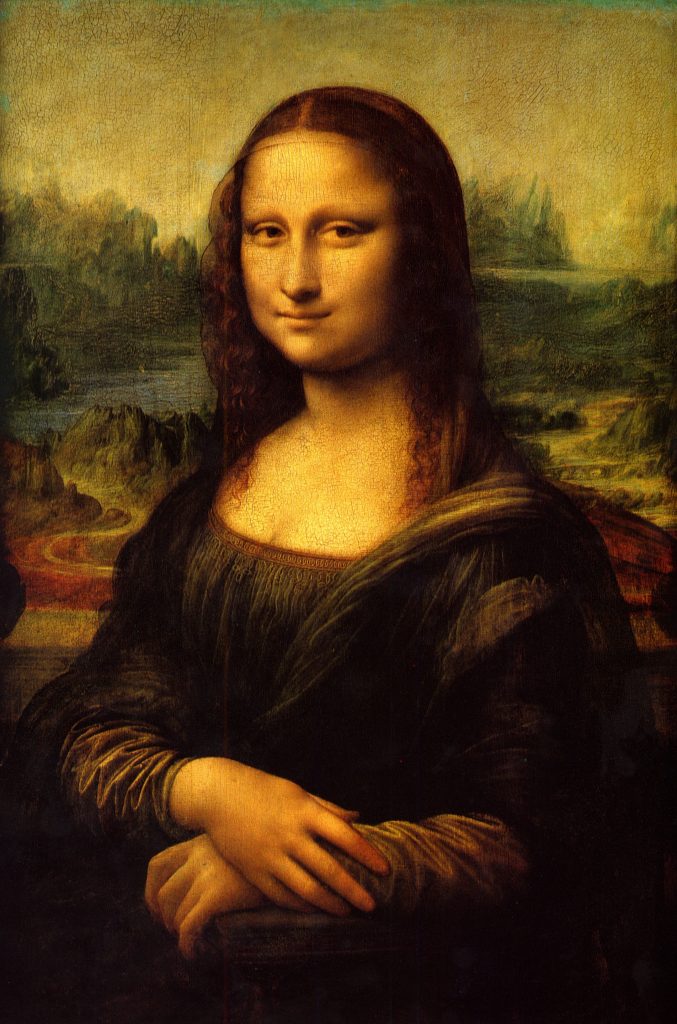
She is simply dressed and her hair is not braided. Vassari said of the smile that Leonardo had employed jesters to keep her amused. As with all his paintings it was painted on wood not canvas. Another innovation in this portrait was that Leonardo no longer used a dark background but painted a landscape.
His painting in 1480 ‘Madonna of the Carnation’ shows the brilliant way Leonardo has used oil to give texture to the clothing. The landscape also shows perspective disappearing.
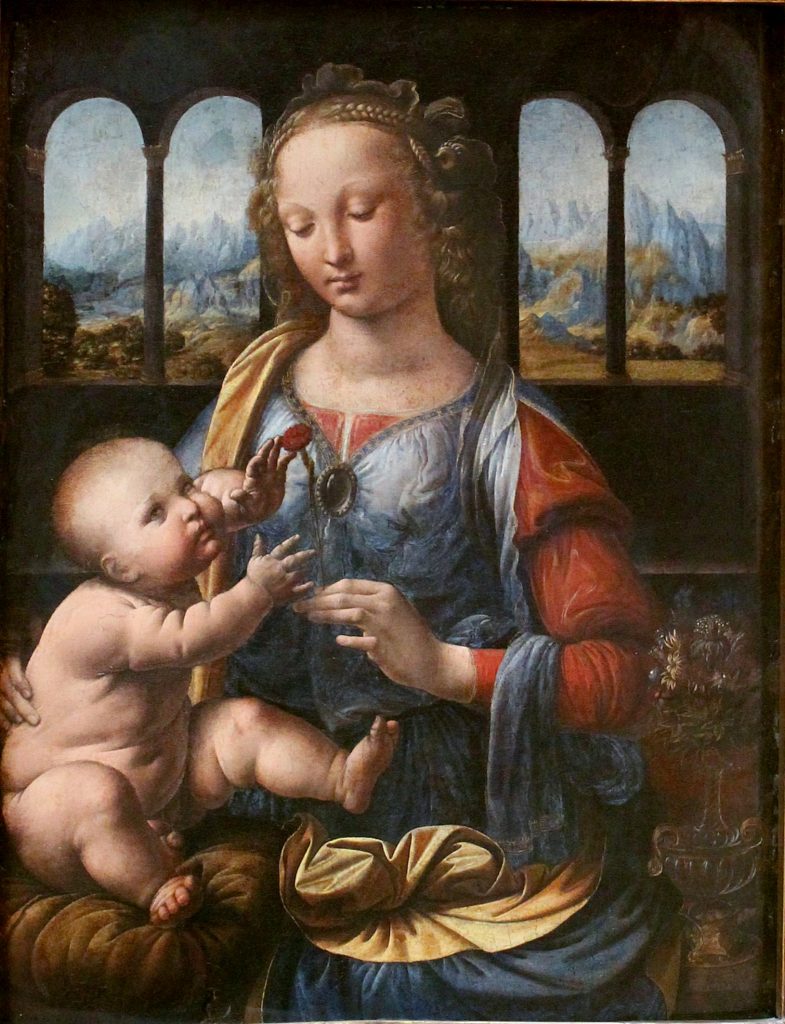
In the Vigin and Child, the Madonna points to John and has her arm on him whilst Jesus is blessing him.
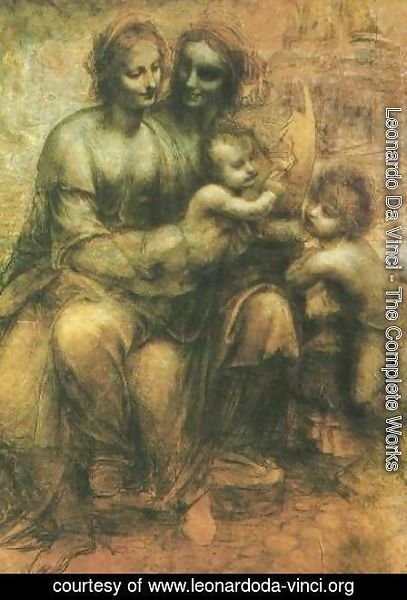
In the preliminary sketches there is a real glow to Her face and the palm of Her hand is in shadow. He has produced a really revolutionary painting with no wings, no halos and no thrones.. There is an infusion of human form and nature. The painting in the Louvre is the original whilst the one in the National Gallery is quite different. It is thought that the latter has been painted by his students.
The painting of the Virgin and Child with St. Anne in 1507 shows an extension of mother/child relations as it also has Mary’s mother Ann.
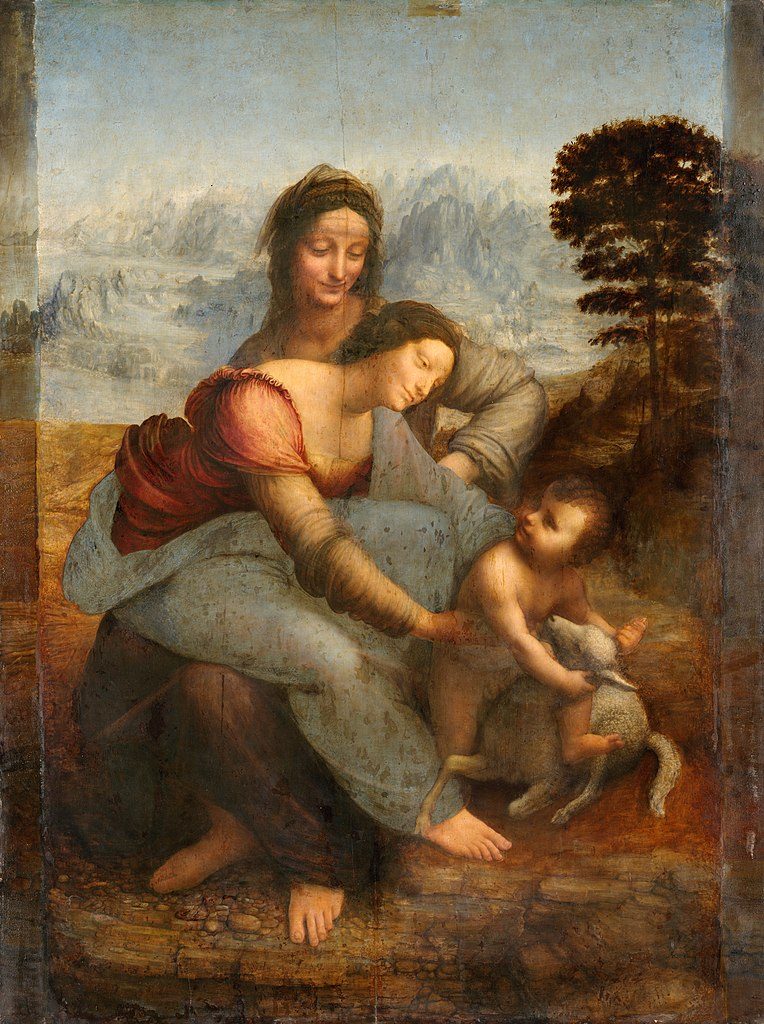
Again, in this painting the upper body of St. Anne is facing one way whilst the lower body faces a different way. The Virgin’s sad expression seems to show that she knows what will happen.
Leonardo only painted 4 portraits of women but they were all hugely influential. His greatest – The Mona Lisa has been copied many times and raised the question of the role of beauty.
